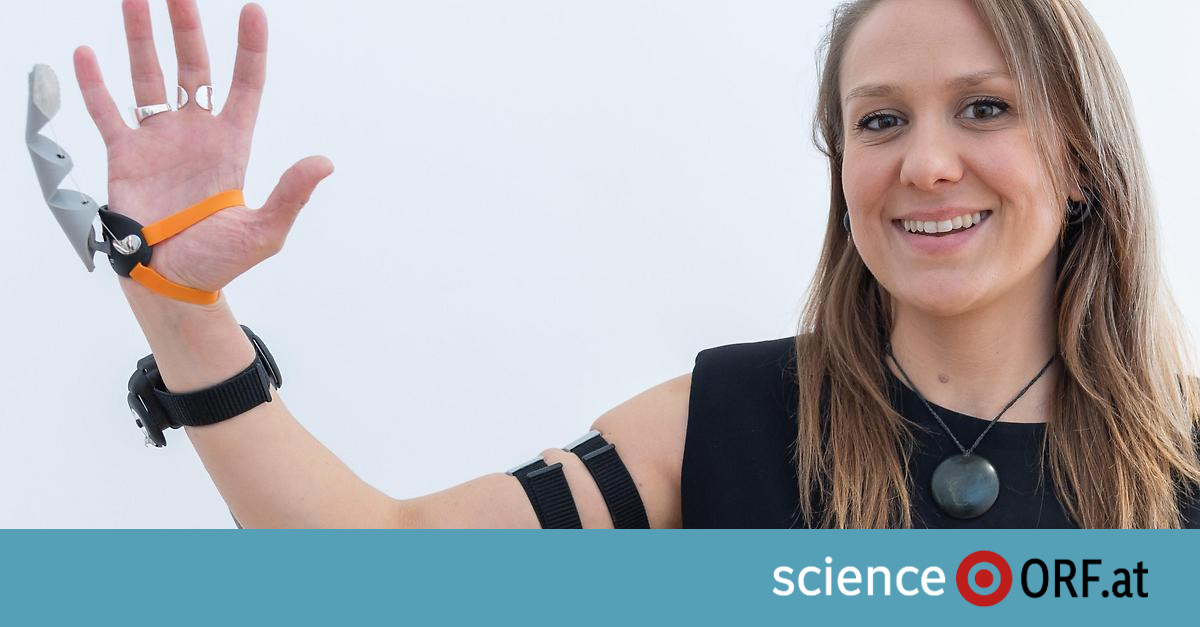This “third thumb” goes to the work of the designer and researcher Danny Claude From the University of Cambridge, one of the conference speakers. The “third thumb” is located just below the little finger and, using two motors, can move in the same way as the normal thumb opposite it.
The system is controlled by pressure sensors placed under the toes. You quickly learn how to deal with this, as British researchers from the Third Thumb Project, among others, did last year. Science fair In London when children and young people tested the prosthetic thumb.
An additional layer of the body
What is actually possible in the world of prosthetics today and what are the far-reaching ideas for linking technical systems with living organisms is the topic of the research meeting entitled, which continues until Wednesday “Convergence?” – roughly translated as “grow together?”
Conference “Convergence?” It is organized by the Academy of Sciences (ÖAW) and the Vienna Science, Research and Technology Fund (WWTF).
One question mark associated with it is whether this is still in the realm of subsidized medical assistance indicated for people with physical disabilities, or whether it is really about targeted enlargement of the human body using technology (“augmentation”).
The “third thumb” in particular can illustrate this: once attached to a patient’s deformed hand, it functions as a kind of prosthetic; On the other hand, it can be considered an extension. For the clade, the latter can be seen as a kind of additional layer to the body – for example, when an exoskeleton helps a worker move heavy objects.
Perception and the brain interact quickly
Prosthesis, augmentation or not: The use of technologies with a fairly direct interface to the human body and mind has a negative impact. For example, Claude and her colleague from Cambridge, among others Tamar McCain She found that after just five days of moderate training with the third thumb, the perception of fingers in the test subjects’ brains began to change somewhat.
McCain has already shown in studies that new classes of prosthetics can be formed in the brains of wearers. It is therefore not necessarily related to the control and perception channels of the “hand” or “tool”. McCain stressed that “the brain can find other solutions.”
Despite all the technological considerations, the fundamental key to the sensible and beneficial use of prosthetics is the degree to which the system can be experienced as part of the individual’s body. It’s called research “embodiment”.
Hands are organs of perception
In the future, high-tech prosthetics will be integrated into the skeleton, controlled by redirected neural signals in the muscles and, supported by high-performance algorithms, will also provide feedback to the user – this vision has been described by a research team led by Oscar Assmann. From the Medical University of Vienna more than two years ago In the journal Nature Biomedical Engineering. In the ÖAW ballroom, Assmann explained why fast reactions from the prosthesis to the body are needed.
That’s why you have to learn to understand the “language of nerves” and muscles, says the doctor and technology developer, who and his team have been able to make exciting progress in recent years, for example with new prosthetics for the arm or leg. Straight to the bone.
For him, it is clear: the hand is not just an organ that performs movements, but rather a “perception device” that begins in the brain. It is no coincidence that people say they will “look” into the bag and then extend their fingers into it: “My fingers can see,” Azman says. In the coming years, new ideas for direct brain connections, the use of artificial intelligence methods and significant investments by major technology companies will make it clear to what extent these capabilities can be implemented with the help of technology in the future.

“Certified tv guru. Reader. Professional writer. Avid introvert. Extreme pop culture buff.”







More Stories
Pitch: €56m for energy startup Reverion
Plastoplan: Plastics for Energy Transition
Canon Launches Arizona 1300 Series with FLXflow Technology